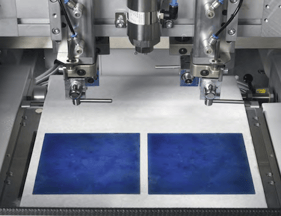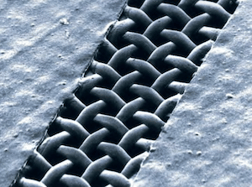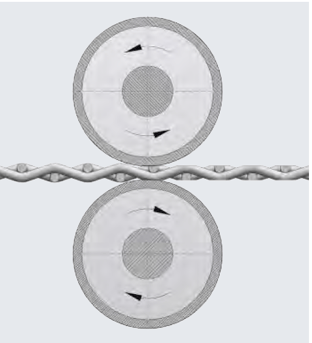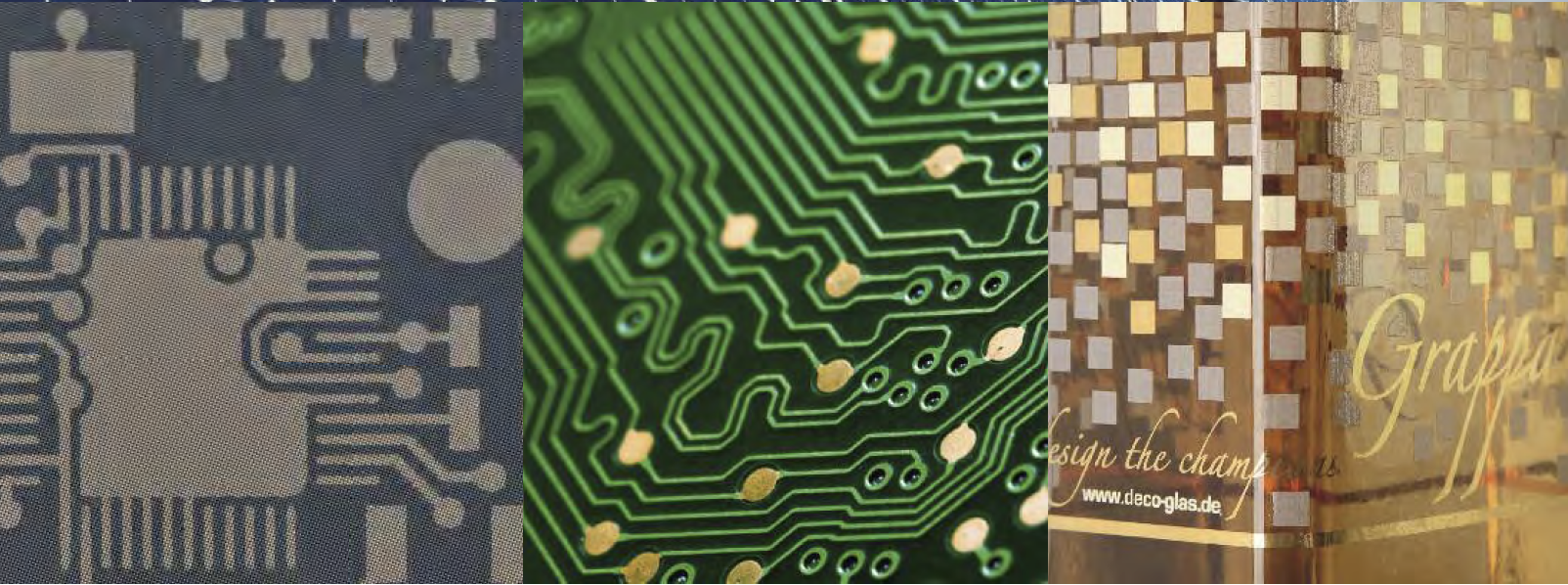Wire Mesh for Screen Printing (Benefits, Alternatives, and Cost)
At W.S. Tyler, we pride ourselves on the quality and versatility of our stainless steel woven wire mesh. As a company that has been weaving and working with stainless steel wire for over 50 years, we have seen an endless amount of uses and industries use our mesh.
Some of those uses are more current, or new, and some of those industries have been around forever.
One of those industries that have been around for a long time the screen printing industry. There are many kinds of media that can be used for the screen printing industry, but stainless steel mesh has proven to be one of the most efficient and cost effective options.
In this article, we are going to dive into what makes stainless steel wire mesh such a great solution for the screen printing world in terms of benefits, cost and finding the best fit for your needs.
We are also going to cover the situations where stainless steel mesh may not be the right fit for your screen printing needs.
What Is Screen Printing?

Screen printing is a printing technique that uses mesh to transfer ink onto a substrate. A blade or squeegee is moved across the screen to fill the openings in the mesh with ink/paste. A stencil will block parts of the openings in the mesh to create a design on the surface being printed on.
When screen printing originated, back in the 1600’s, silk screens were used to transfer the designs. The problem with using silk as a screening media is that over time, it doesn’t hold up because it will swell up and tear.
Today, the most common media for screen printing are polyester, nylon, and stainless steel.
At W.S. Tyler, we supply stainless steel woven wire mesh as screening media for this industry.
Benefits of Stainless Steel Wire for Screen Printing
When it comes to screen printing there are quite a few reasons why stainless steel wire mesh is ideal.
Those benefits are:
- Tension- Stability and Durability
- Heating Capabilities
- Cost Savings
- Calendaring for precise printing
Tension
Tension is very important to the screen printing industry. The media serving as the screen is stretched tightly before the squeegee with ink is run over the screen.
Stainless steel has less than 1% elongation, while other materials, like nylon or polyester, have more than 5%.
If you were to try to stretch nylon or other synthetic materials at certain tension levels, it will create rectangular openings which could tear and cause inconsistencies in your printing. This means that stainless steel woven wire is able to be tensioned, or stretched, at very high rates without changing the shape of each individual opening.
Stability and Durability

Stainless steel wires are also more stable than polyester or nylon.
Stainless steel woven wire can withstand hard conditions, even at the smaller opening sizes and thinner wire diameters.
With nylon or polyester, there is a limit to how fine or thin, you can get your individual threads to be because they cannot withstand the tension and stretch that is needed.
Stainless steel woven wire can get down to a very small diameter of each wire and still be able to be stretched and tensioned without suffering any alterations to the mesh itself or your process.
Cost Savings
There are two main ways we have seen stainless steel wire mesh reduce cost in this industry.
The first is the available options with wire mesh in terms of weaves. These different patterns and weaves can
allow for more ink to be deposited in one pass, eliminating the need for multiple passes for each print.
Each time a pass is needed, you risk not having it line up precisely with the last pass and are also spending more in time and ink/paste.
The second cost saving benefit to stainless steel wire is if you are using very expensive ink or pastes.
The wire diameter is critical to reducing costs in terms of paste or ink needed. Stainless steel wire mesh is able to use a very limited amount of paste to transfer.
Stainless steel can be made with very thin individual wires that still offer a very high connectivity.
When the amount of paste needed can be reduced to a such an exact amount, this can save companies using expensive paste, like silver in the solar industry, significant money.
Calendaring for Accuracy

One of the biggest challenges with the screen printing process is movement within the screen.
When the squeegee passes over the mesh during the screen printing process, it can push the wires forward. This can create discrepancies in each print. If you were to compare print number 1 to print number 1000, you will see that they do not line up.
Calendaring the wire mesh before it goes into production, can help reduce this movement that happens during the printing process.
Calendaring is the process of placing the wire mesh between rollers and reduced to a predetermined thickness. This process stabilizes the mesh and also creates a smooth and uniform surface.
Calendaring crushes the knuckles together on the wire mesh which eliminates the amount of movement you get from the wires during your process.
By calendaring the mesh before using it, you can see a major improvement in repeatability in your prints by eliminating that movement during each pass.
Cost
When it comes to buying stainless steel wire mesh for screen printing, cost will differ depending on your exact needs, but you can expect to pay anywhere from $3 -$15 sq/ft.
Here are some of the questions you should ask yourself when thinking about cost:
- What mesh count do I need?
- Do I need my mesh calendared?
- Do I need it cut to a certain size or on a roll?
If you know the answers to these questions you should have no issues getting an exact quote for your woven wire.
When Is a Stainless Steel Screen Not the Best Choice?
When it comes to choosing the right media for your screen printing needs, it is always dependent on your specific needs and your application.
Although stainless steel woven wire can be a great solution for so many screen printing applications, there are situations where other types of media may be a better fit.
- If you are working with fabrics or stretchy surfaces, nylon or polyester is probably going to be a better media for you. Unlike stainless steel mesh, Polyester or Nylon have the ability to form to soft surfaces.
- Woven Wire mesh is typically more expensive than nylon or polyester. If you need the durability and precise features of stainless steel woven wire, this makes it a great fit for you. If you don’t need those features for your application, perhaps a synthetic material will work for you.
- If you are printing on very fragile materials like ceramics, wire mesh may damage the surface. This is another situation where it may be better to go with a synthetic material.
Optimize Your Screen Printing Operation
Woven wire mesh provides the tensioning capabilities, durability, cost effectiveness, and accuracy needed to thrive in the screen printing. The benefits are what allow woven wire screen printing mesh to accurately disperse inks of all varieties.
From logos on product packaging to precise solder masks on circuit boards, woven wire screen printing mesh can be used to accurately depict the desired design. That said, the effectiveness of screen printing operation relies on the use of the right mesh count for the job.
With over 140 year of woven wire mesh experience, W.S. Tyler has the expertise needed to help you pinpoint the right mesh specifications and implement high-quality mesh solutions.
To gain better understanding of which mesh count is right for you, check out our article: What Is the Best Mesh Count for Screen Printing?
About Daniel Rosbottom
Daniel is W.S. Tyler’s Marketing Manager and has been with the company for over seven years. To create the ultimate customer experience, he is responsible for leading the company’s team of marketing specialists, maintaining the marketing budget, working with marketing contract workers, and incorporating the initiatives of the sales force into various marketing campaigns.




